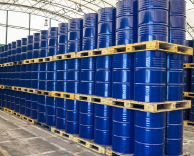Efficient Transformer Oil Filtration | High-Performance Machine
Introduction
Transformer oil filtration is the solution that helps you get the most out of your power transformers. In this blog, we look at why this vital maintenance procedure is important and how it can increase the life span and reliability of your equipment significantly.

Transformer oil (or insulating oil) plays a very important role in
various functions like heat dissipation, insulation, and arc
quenching in the case of the power transformer. This oil keeps the
system well-oiled, but over time, contaminants and impurities will
build up in the oil and eventually become less effective and
weaken your whole power plant.
Enter the "Transformer Oil Filtration". This process eliminates
various materials, such as contaminants, moisture, and gases from
the oil to assure the highest functioning of your transformers and
a longer life of the transformers. Not only does it mitigate the
risk of expensive breakdowns, but it also increases energy
efficiency while minimizing maintenance and downtime costs.
At Minimac Systems, we realize the need for better performance and
better efficiency, all at minimal operating cost. Designed to
provide functionality, our transformer oil filtration system comes
with an assurance of great performance, reliability, and the
seamless functioning of your power transformers.
Indulge in the benefits of transformer oil filtration and make a
revolutionary move towards peak efficiency and enduring
performance of your power apparatus.
Importance of Transformer Oil Filtration:
Transformer oil is critical for insulation, heat dissipation, and protection of components inside the apparatus. As time passes, impurities like water, sludge, and by-products from oxidation spoil the quality of oil, and the oil starts to lose its efficiency, ultimately leading to failure of the machinery. To avoid expensive outages and to extend the life of a transformer, regular oil filtration is a must. By using an advanced filtration machine, you guarantee maximum reliability out of your transformers, so you can keep your maintenance costs low while being compliant with your central authorities.
What is Transformer Oil Filtration?
Transformer oil filtration removes those contaminants and restores the properties of the oil. It includes the coarse and fine filtration, vacuum dehydration, and degassing. It reestablishes the dielectric strength of the oil, retains cooling capacity, and prevents electrical failures. By performing regular filtration as a maintenance program, it allows the appliance to be repaired less often and reduces the shutdown time, also providing reliability throughout the operation of the electrical system.
Benefits of Efficient Transformer Oil Filtration
- Enhanced Performance and Dependability: By eliminating impurities, you enhance insulation and cooling, which ultimately improves reliability and minimizes electrical failure rates.
- More Years out of Your Transformers: By slowing the aging of transformer parts through filtration, you can prevent unexpected failures and prolong the service life of the equipment.
- Lower Maintenance Expenses: Optimized filtration minimizes oil change and transformer maintenance, helping save on expenses in the long run.
- Increased Energy Efficiency: Transformers with clean oil work more efficiently, which will lead to lower energy losses and ultimately lower operating costs, as well as reducing the carbon footprint of the organization.
- Regulatory Compliance: Keeping oil contaminant-free helps meet regulations and maintain infrastructure responsibility.
Common Contaminants in Transformer Oil
- Water: Even small water contamination reduces oil dielectric strength, risking insulation failure.
- Sludge: Oxidation by-products clog filters and hinder heat transfer, reducing efficiency.
- Oxidation By-products: Heat and oxygen form varnish-like deposits, degrading oil performance.
- Particulate Matter: Dust and metal debris increase wear on components, raising maintenance needs.
- Dissolved gases: Hydrogen and acetylene presence indicates internal arcing and faults.
How Does the Transformer Oil Filtration Work?
- Coarse Filtration: Removes larger impurities to protect downstream filters.
- Fine Filtration: Extracts smaller contaminants, restoring insulating properties.
- Vacuum Dehydration: Eliminates moisture to improve dielectric strength.
As the oil passes through this process, it is constantly monitored to guarantee that it is safe and that all the performance values for the new oil fall within the required values.
To know more about oil filtration systems - Click Here
Our Filtration Machine Features
- Efficient Filtration: Multi-stage system handles coarse/fine filtration, dehydration, and degassing.
- Automated control system: Live monitoring and control reduce human error and boost performance.
- Easy to Transport and Set Up: Compact design allows portability and fast site setup.
- Easy to use: Simple controls streamline operations and reduce errors.
- Built for Heavy Industrial Use: Rugged structure ensures durability and low maintenance.
Steps to Efficiently Filter Transformer Oil
- Preparation: Isolate the transformer and heat oil if needed. Set up workspace.
- Coarse Filtration: Remove large particles like sludge and metal bits.
- Fine Filtration: Eliminate smaller pollutants like moisture and oxidation waste.
- Vacuum Dehydration: Pull residual water from oil.
- Degassing: Remove gases for enhanced oil performance.
- Monitoring: Track key metrics like dielectric strength and water content.
- Waste and recycling: Follow disposal regulations or reuse filtered oil where feasible.
Maintenance and Care for the Filtration Machine
- Routine Inspections: Look for wear or performance drops to prevent issues early.
- Regular Maintenance: Follow schedule for filters and lubrication to sustain efficiency.
- Calibration and Testing: Ensure sensors remain accurate with periodic testing.
- User Error Prevention: Train staff on proper handling and safety protocols.
- Spare Parts Management: Keep essentials like filters and gaskets in stock to avoid downtime.
Conclusion
By investing in our transformer oil filtration system, you can
operate your transformers with minimum downtime and maintenance
costs. Utilizing 3-stage filtration, with easy controls, & built
rigorously to meet the highest of industry standards. Periodic
filtration makes transformer oil clean, prolongs transformer life,
and improves energy efficiency. Select our advanced filtration
machine to protect your power systems and ensure permanent
dependability.
Learn more about our services and industry insights by visiting
our official LinkedIn page:
Minimac Systems
FAQs:
- Enhances transformer reliability Cleaning the oil provides better insulation and cooling, lowering the chances of electrical failures.
- Increased transformer lifespan: Regular filtration inhibits aging, prolonging equipment life.
- Lower maintenance costs: Reduced oil changes and repairs offer big savings
- Improved energy efficiency: Clean oil increases transformer efficiency, which means less energy is lost and a reduction in the costs associated with operation.
- Compliance with regulations: Clean oil helps address industry standards and proper management.
- Electrical insulation: It provides insulation to transformer internals from electrical arcs and short-circuits.
- Cooling: The oil absorbs heat produced by a transformer and radiates it away from critical components.
- Arc Extinction: When a fault occurs, the need arises to extinguish the electrical arc, which the oil helps to do, thereby reducing the damage to the transformer.





